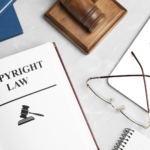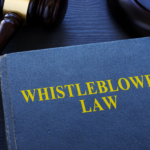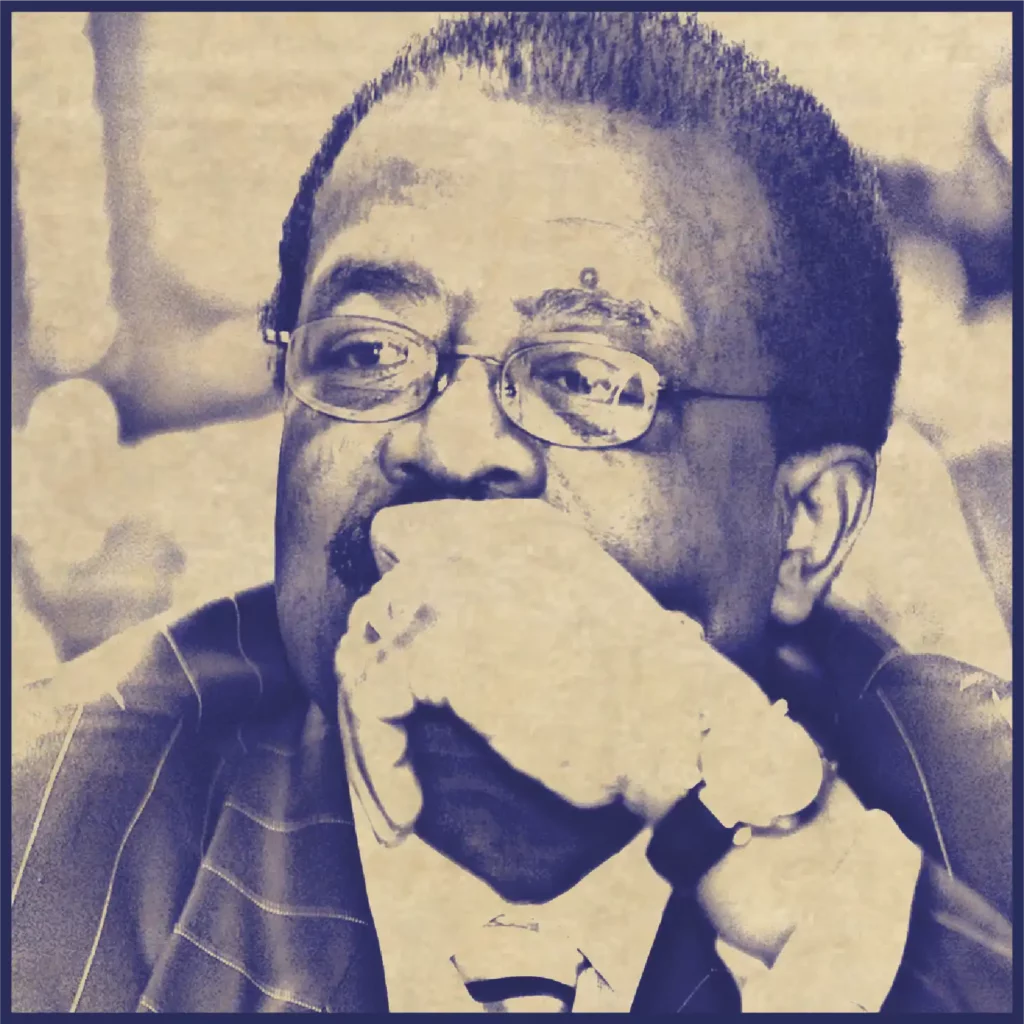
Britannica defines police brutality in the United States as “the unwarranted or excessive and often illegal use of force against civilians by U.S. police officers. Forms of police brutality have ranged from assault and battery (e.g., beatings) to mayhem, torture, and murder. Some broader definitions of police brutality also encompass harassment (including false arrest), intimidation, and verbal abuse, among other forms of mistreatment.”
The Bureau Of Justice Statistics defines deadly or lethal force as “force that a law enforcement officer uses with the purpose of causing, or that the officer knows to create a substantial risk of causing death, or serious bodily harm.” Excessive use of force is “the application of lawful use of force in too many separate incidents.” Non-deadly or less-lethal force is “the level of force required to gain compliance that is not known to or intended to create serious bodily harm or death.” The use of excessive force is “the application of force beyond what is reasonably believed to be necessary to gain compliance from a subject in any given incident.” Use of force is “the amount of effort required by law enforcement to gain compliance from an unwilling subject.”
A 2012 report addressing the use of force by law enforcement officers included comments from several participants of police departments. Danville Police Department Chief of Police Philip Broadfoot stated, “There is a large body of case law that permits the police to use force that is reasonably necessary to overcome the force used against them. The public often perceives that force as excessive when it is not.” In this same report, Springfield Police Department Major (Ret.) Steven Ijames explained, “The perception is that chiefs know about the use of force in their departments, but the reality is they often do not. When we come in afterward to ask for data to explain to a jury, it is almost impossible to obtain.”
The United States Department of Justice (DOJ) enforces laws to address police misconduct. Federal police misconduct laws include criminal and civil statutes, covering the actions of State, county, and local officers, including prison and jail workers. Many laws also apply to Federal law enforcement officers. These laws protect American citizens and non-citizens.
Americans from all walks of life are subject to brutality from the police. Poor and working-class whites in the late 19th and early 20th centuries were frustrated with discriminatory policing practices. Many urban police departments in the 1920s, like Chicago and New York, used tactics against Italian-immigrant communities to deplete organized crime. Britannica reports that Los Angeles Police Department officers in 1943 “were complicit in attacks on Mexican Americans by U.S. servicemen during the so-called Zoot Suit Riots, reflecting the department’s history of hostility toward Hispanics (Latinos).” New York City police harassment of homosexuals and transgender persons peaked in 1969 during the Stonewall riots, set off by police raiding a gay bar. In the international gay rights movement, these riots began a new era of militancy. After the attacks on September 11, 2001, Muslim Americans voiced complaints concerning police brutality, racial profiling, and harassment. Many local law enforcement agencies began operations of questionable legality designed to surveil and infiltrate mosques and certain Muslim American organizations to expose presumed terrorists. These practices went unchecked for at least a decade.
On August 10, 2016, 32-year-old unarmed Anthony Timpa called 911 for help after taking drugs while off his mental health medication. The Dallas Morning News acquired body camera footage that shows officers from the Dallas Police Department pinning the white man’s shoulders, neck, and knees to the ground. Timpa exclaimed, “You’re gonna kill me!” While Timpa’s nose pressed into the grass below him, officers alleged hearing him snore, supposedly unaware that these would be his last breaths. Dallas law enforcement officers pinned Timpa for nearly fourteen minutes. The 32-year-old was dead once placed onto a gurney and set into an ambulance.
In a 2016 custodial death report, the department responded with “no” to questions regarding whether Timpa resisted arrest, threatened, or attacked officers. Following this report, Timpa was declared combative on a Dallas Police Department record. An autopsy found the cause of death of Timpa as a homicide, abrupt cardiac death due to “the toxic effects of cocaine and the stress associated with physical restraint.”
In 2017, police officers Dustin Dillard, Danny Vasquez, and Kevin Mansell were indicted by a grand jury on misdemeanor charges of deadly conduct. Dillard can be heard in body camera footage stating, “I hope I didn’t kill him.” The grand jury’s indictment declared that the officers involved participated in reckless behavior, ultimately placing Timpa in danger of severe bodily injury. Yet, Dallas County District Attorney John Creuzot dropped the charges in March. Three medical examiners reportedly informed him they did not think the involved officers behaved recklessly and “cannot, and will not, testify to the elements of the indictment beyond a reasonable doubt.” In December 2017, police officers Mansell and Vasquez were put on administrative leave, according to internal affairs records, and in March of 2018, Dillard was also placed on leave. They returned to active duty in April after Creuzot dismissed the case.
On May 25, 2020, Minneapolis police officer Derek Chauvin, 44, is seen in a viral video kneeling on Minnesota unarmed resident George Floyd's neck until he could not breathe, similarly to the death of Tony Timpa. Police officers arrested Floyd after an employee of a deli called 911, accusing the man of purchasing cigarettes with a counterfeit $20 bill. Within seventeen minutes of the first police vehicle arriving, Floyd was unresponsive. In the footage, Floyd asserted, “I can’t breathe!” The Hennepin County medical examiner's office autopsy report found that Floyd had arteriosclerotic and hypertensive heart disease. Toxicology tests described the presence of fentanyl in Floyd's system with an indication of methamphetamine use.
The Minneapolis Police Department fired the four officers involved in the incident. Chauvin, the former 19-year veteran with the Minneapolis police department, was charged with third-degree murder and manslaughter in the death of George Floyd on May 29, 2020. However, the charges seemed too little for Minnesota's Attorney General Keith Ellison. He filed an amended complaint on June 3, 2020 that charged Chauvin with second-degree murder. Hennepin County Attorney Mike Freeman announced that the evidence against Chauvin covers body camera footage, video from a witness’s cell phone, statements from bystanders, and the medical examiner’s report. Ellison stated that evidence supported a stronger charge for Chauvin.
In addition to Chauvin, the three officers at the scene were Thomas Lane, J.A. Keung, and Tou Thao. All were recorded, failing to intervene. Thao was charged with "aiding and abetting second-degree murder in the commission of a felony," while Lane and Keung will encounter related charges concerning aiding and abetting.
"Trying this case will not be an easy thing," Ellison declared. "We will seek justice for him [Floyd]."
The loss of the 46-year-old black man in Minnesota police custody ignited outrage, protests, and riots across America. The chaotic riots include looting of businesses, shootings, vandalism and arson in neighborhoods, attacks on cops, and more.
Footage posted by The Sun displays a shocking view from Chicago of a male and female police officer beaten and dragged by a gathering of people during the riots following the death of George Floyd. On May 28, 2020, a Minneapolis police precinct house was set on fire by rioters. The riots urged Minnesota Governor Tim Walz to initiate the assistance of the National Guard earlier that day. Among the riots and protests in Oakland, Federal Protective Services officer Dave Patrick Underwood was killed in a shooting on May 29, 2020. Along with Underwood, retired St. Louis police captain David Dorn was killed by looters while attempting to protect a friend’s pawn shop. His body was found on June 2, 2020.
Reuters/Carlos Barria
On May 31, 2020, the Associated Press stated that about 4,100 arrests had been made during the riots and protests. This organization also reported that in Boston, rioters had caused severe damage to police vehicles, including throwing rocks and lighting them on fire.
AP/Evan Vucci
According to Britannica, experts explain that a critical factor of the predominance of African Americans among police brutality victims is antiblack racism among predominantly white police departments. Comparable prejudices are thought to have played a role in police brutality committed against other historically oppressed or marginalized groups.
Whereas racism is thought to be a significant root of police brutality aimed at various communities, it is far from being the primary cause. Other aspects involve the particular culture of urban police departments, stressing loyalty, group solidarity, and a “show of force” method to any anticipated challenge of official authority. For amateur officers, departmental success, promotion, and acceptance depend on embracing the values, attitudes, and practices of the group, which have been historically infused with antiblack racism.
Some cities across America have created groups to help citizens with complaints of police misconduct. The Department of Police Accountability's mission in San Francisco, California, is to “promptly, fairly and impartially investigate complaints against San Francisco police officers, make policy recommendations regarding police practices and conduct periodic audits of the San Francisco Police Department.” Their staff includes civilians who have never been part of a police force. This department also was granted “the power to conduct periodic audits of the San Francisco Police Department.”
The Cochran Firm strives to assist victims of police brutality by pursuing justice and compensation. If you have been a victim of police brutality, start by reading our blog post Mistakes to Avoid if You Are Ever Arrested. To speak with an expert, please contact our 24/7 call center at 1-800-THE-FIRM (673-1555) or send us a message on our website.
America is a broad and diverse nation that houses around 18,000 law enforcement agencies. News organization USA TODAY Network has gathered discipline and accountability records on more than 85,000 law enforcement officers. USA TODAY Network began releasing these records to the public. They stated that “the first collection published is a list of more than 30,000 officers who have been decertified, essentially banned from the profession, in 44 states. Most misconduct involves routine infractions, but the records reveal tens of thousands of cases of serious misconduct and abuse.”
USA TODAY Network revealed that 22,924 investigations of officers included the use of excessive force. “The records document at least 2,227 instances of perjury, tampering with evidence or witnesses or falsifying reports. There were 418 reports of officers obstructing investigations, most often when they or someone they knew were targets. Less than 10% of officers in most police forces get investigated for misconduct. Yet some officers are consistently under investigation. Nearly 2,500 have been investigated on ten or more charges. Twenty faced 100 or more allegations yet kept their badge for years.”
In a 2019 PBS interview, USA TODAY Network reporter James Pilcher stated that it is essential that these reports are public "because the public doesn't have a way to have an insight into the people that were supposed to be protecting us and so, this was a way for us — you know, there are other agencies who do collect this data, but they don't make it public. This was a way for us to take it to the public and say, OK — especially in this day and age where we're having such a debate over policing and police tactics that we felt that this was the right time to do this."
CATO Institute in Washington, DC, reports that in most areas, “local police departments typically conduct internal investigations of police officer misconduct complaints. However, 79% of Americans would prefer that an ‘outside law enforcement agency take over the investigation’ when an officer is suspected of criminal wrongdoing. Overwhelming majorities across demographics and partisan groups, including majorities of blacks (82%), whites (81%), Hispanics (66%), Democrats (83%), independents (77%), and Republicans (76%), all favor outside investigations and prosecutions of officers accused of misconduct.”
The survey found that black Americans are approximately twice as likely as whites to know someone physically mistreated by police or to report police swearing at them. The research also determined that blacks report being stopped by police more than whites as their incomes increase. According to USA TODAY, this suggests that police are disproportionately scrutinizing black drivers in nice vehicles or nice neighborhoods. Higher-income black Americans reported stops by police about 1.5 times more often than higher-income white Americans as well as lower-income black and white Americans.
According to a 2015 report from the Bureau of Justice Statistics, two percent of Americans who had contact with police encountered threats or use of force. In police-initiated contact, blacks and Hispanics were more likely than whites, and males were more likely than females, to endure the threat or use of physical force by police. The report also found that the number of Americans aged 16 or older who experienced police contact from 2011 to 2015 decreased from 26% to 21%, with a decline of more than nine million people. In data collections from 2002 to 2011, blacks were found more likely to experience nonfatal force during their most recent encounters with police officers than whites and Hispanics.
According to a publication from the United States Commission on Civil Rights, “in September 1997, a man sued the state police after receiving permanent neurological damage, and ‘a skull fracture and broken bones’ after being ‘clubbed by three officers.’” The United States Commission found this information on Civil Rights as “representative of the seriousness of police brutality committed by West Virginia law enforcement personnel.” Another example reported that ‘in November 2001, 21-year-old Jason Smith was pepper-sprayed and beaten so badly by two Chapmanville police officers that his mother said, ‘it didn’t even look like him.’”
Statistics in a report from the International Association of Chiefs of Police/COPS Office Use of Force Symposium infer that police use of force is scarce, and the improper use of force or negative force associated outcomes is a relatively rare occurrence. Each year, some chiefs will have to respond to significant events when their officers have been killed, a suspect has been killed, or conflicts occur that call into question the professionalism of specific officers. A police chief must be prepared for this possibility and maintain the confidence to take fast and crucial action. A chief’s standing in the public’s eyes can be impacted by a single response to a critical incident.
Are you asking yourself if police brutality has increased over the years, or has it stayed the same? We completely cover this topic in another blog post.
If you are a victim of police brutality, The Cochran Firm is here to help. Please contact our 24/7 call center at 1-800-THE-FIRM (673-1555) or send us a message on our website.
You may ask yourself who investigates police misconduct or how to sue the police for excessive force or brutality. In examining police use of force issues, it is advantageous to view the incident with a broad perspective rather than limiting the focus at the moment force is used. Actions taken or not taken before the incident can have an important influence on the officer’s use of force decisions. Actions taken after the incident can also affect the future uses of force equally as those decisions before the event. Reporting police misconduct is your civil duty as an American citizen.
Chiefs have to ensure that their department collects the use of force data and that the collection format is useful for supervisors to drive decision making. Intelligence-led and evidence-based policing models are not only strategies that improve decision making, but also stimulate better police work and targeting of crime problems. Properly maintained data can determine an early warning system that distinguishes at-risk officers, critical activities, and policy gaps that require immediate mitigation.
Our nation has discussed the use of force by law enforcement officers for a long time, but many cases that involve law enforcement use of force have increased awareness of these incidents in recent years. Though, the chance to examine information associated with use-of-force incidents and to have an informed dialogue is limited by the scarcity of nationwide statistics. Representatives from significant law enforcement groups are operating in collaboration with the FBI to produce the National Use-of-Force Data Collection.
With this, data users can inspect use-of-force occurrences involving law enforcement from a national perspective. The resulting statistics’ goal is to present an aggregate view of the events recorded and the involved subjects, details, and officers. The data collected concentrates on information that is immediately recognized and can be reported in the first few days following a use-of-force occurrence. Statistical reports highlight the collective essence of the data and do not evaluate whether the involved officers acted lawfully or within the department policy’s bounds.
The law enforcement community, in partnership with the FBI, is working to improve the way America gathers, analyzes, and utilizes crime statistics about law enforcement’s use of force. The reporting and collection of use-of-force data will cover any use of force that results in death or serious bodily injury, and when an officer discharges a firearm in the direction of or at a person. The FBI states that the definition of serious bodily injury will be based, in part, upon Title 18, United States Code, Section 2246 (4). The term “serious bodily injury” means “bodily injury that involves substantial risk of death, unconsciousness, protracted and obvious disfigurement, or protracted loss or impairment of the function of a bodily member, organ, or mental faculty.”
The National Use-of-Force Data Collection will include information about the incident, subject, and officer. Three types of use-of-force events and information related to each event will be collected starting in 2017. These events include:
The National Use-of-Force Data Collection will include the following data elements:
In partnership with the FBI’s Uniform Crime Reporting (UCR) Program, data contribution is available to any federal, local, state, and tribal law enforcement and investigative agencies. All law enforcement agencies are responsible for reporting information on incidents involving its officers, meeting the data collection guidelines.
99% of killings by police from 2013-2019 have not resulted in officers charged with a crime, according to research collaborative Mapping Police Violence. In America, most law enforcement officers perform their strenuous jobs with respect to their communities and in compliance with the law. However, in some situations, this is not the case.
The Cochran Firm is here to help innocent victims of police brutality by pursuing justice and compensation. If you feel as though you are a victim, please contact our 24/7 call center at 1-800-THE-FIRM (673-1555) or send us a message on our website.
Contact us today for a Free Consultation





